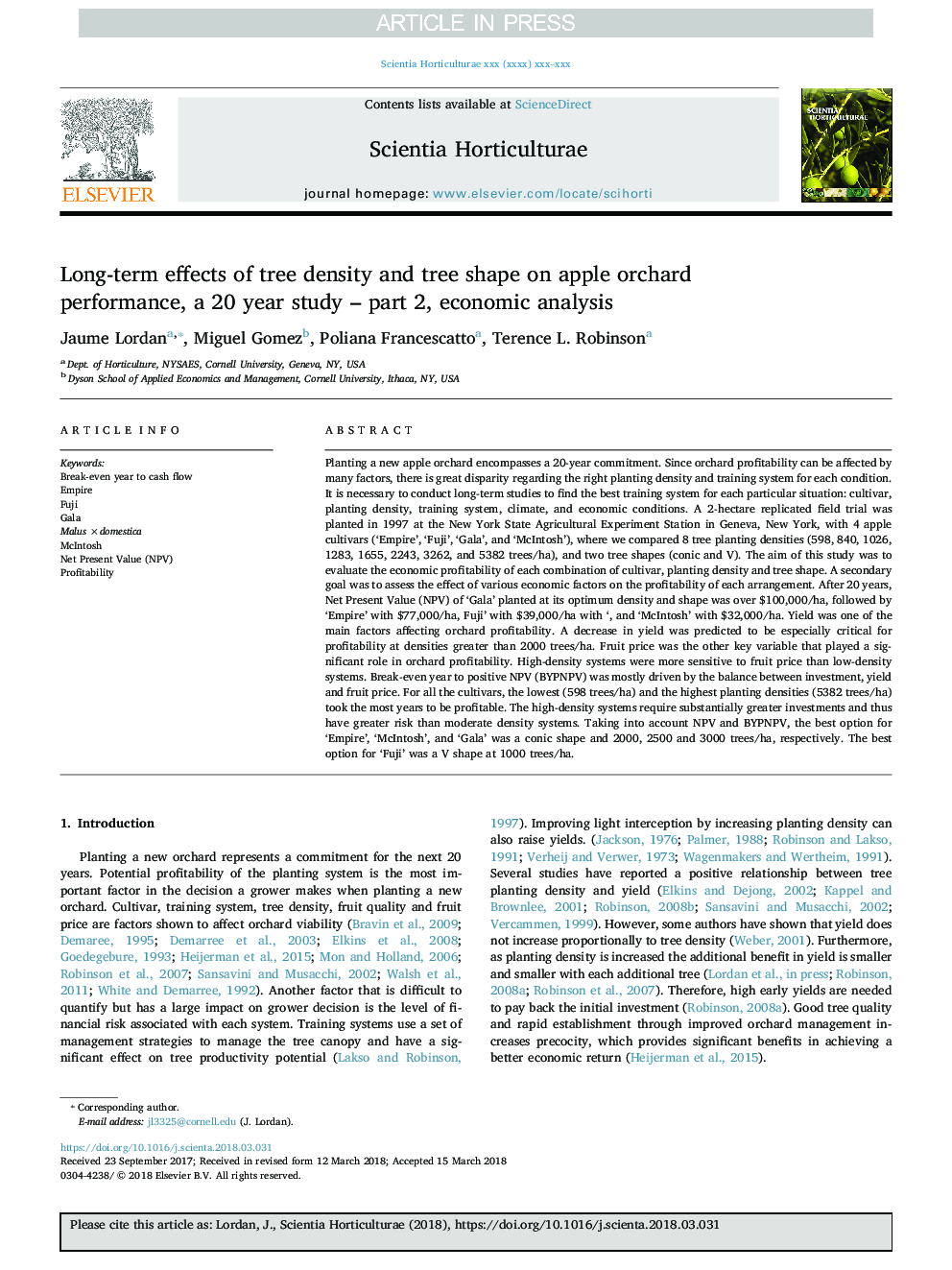| Article ID | Journal | Published Year | Pages | File Type |
|---|---|---|---|---|
| 11024849 | Scientia Horticulturae | 2019 | 10 Pages |
Abstract
Planting a new apple orchard encompasses a 20-year commitment. Since orchard profitability can be affected by many factors, there is great disparity regarding the right planting density and training system for each condition. It is necessary to conduct long-term studies to find the best training system for each particular situation: cultivar, planting density, training system, climate, and economic conditions. A 2-hectare replicated field trial was planted in 1997 at the New York State Agricultural Experiment Station in Geneva, New York, with 4 apple cultivars ('Empire', 'Fuji', 'Gala', and 'McIntosh'), where we compared 8 tree planting densities (598, 840, 1026, 1283, 1655, 2243, 3262, and 5382 trees/ha), and two tree shapes (conic and V). The aim of this study was to evaluate the economic profitability of each combination of cultivar, planting density and tree shape. A secondary goal was to assess the effect of various economic factors on the profitability of each arrangement. After 20â¯years, Net Present Value (NPV) of 'Gala' planted at its optimum density and shape was over $100,000/ha, followed by 'Empire' with $77,000/ha, Fuji' with $39,000/ha with ', and 'McIntosh' with $32,000/ha. Yield was one of the main factors affecting orchard profitability. A decrease in yield was predicted to be especially critical for profitability at densities greater than 2000 trees/ha. Fruit price was the other key variable that played a significant role in orchard profitability. High-density systems were more sensitive to fruit price than low-density systems. Break-even year to positive NPV (BYPNPV) was mostly driven by the balance between investment, yield and fruit price. For all the cultivars, the lowest (598 trees/ha) and the highest planting densities (5382 trees/ha) took the most years to be profitable. The high-density systems require substantially greater investments and thus have greater risk than moderate density systems. Taking into account NPV and BYPNPV, the best option for 'Empire', 'McIntosh', and 'Gala' was a conic shape and 2000, 2500 and 3000 trees/ha, respectively. The best option for 'Fuji' was a V shape at 1000 trees/ha.
Related Topics
Life Sciences
Agricultural and Biological Sciences
Horticulture
Authors
Jaume Lordan, Miguel Gomez, Poliana Francescatto, Terence L. Robinson,
